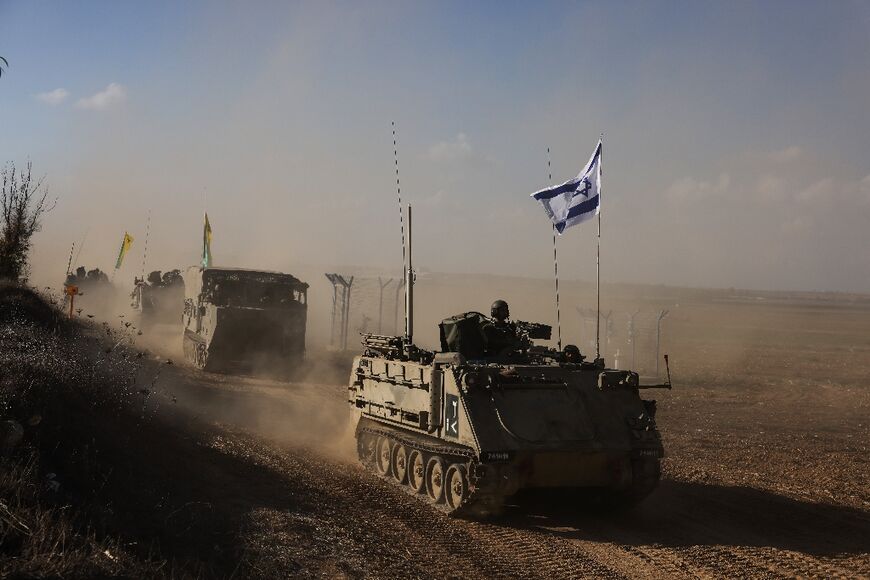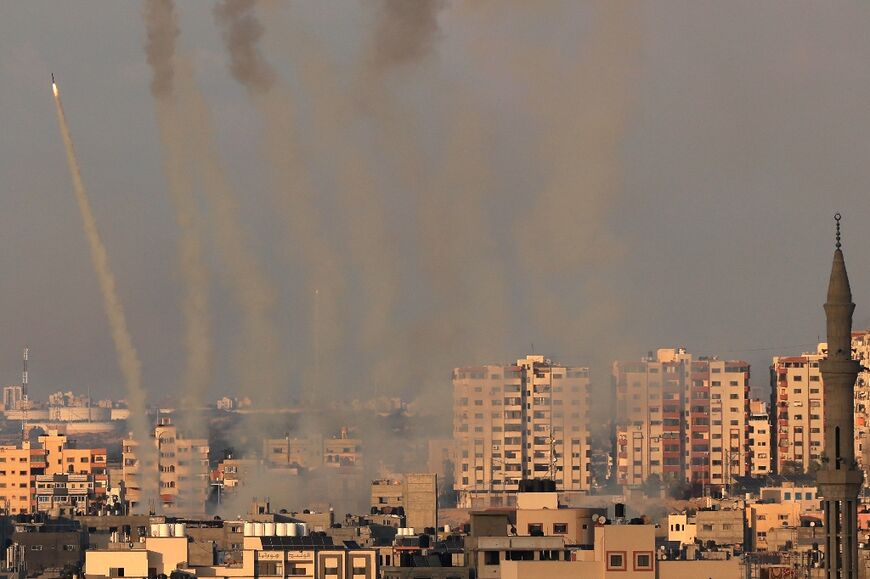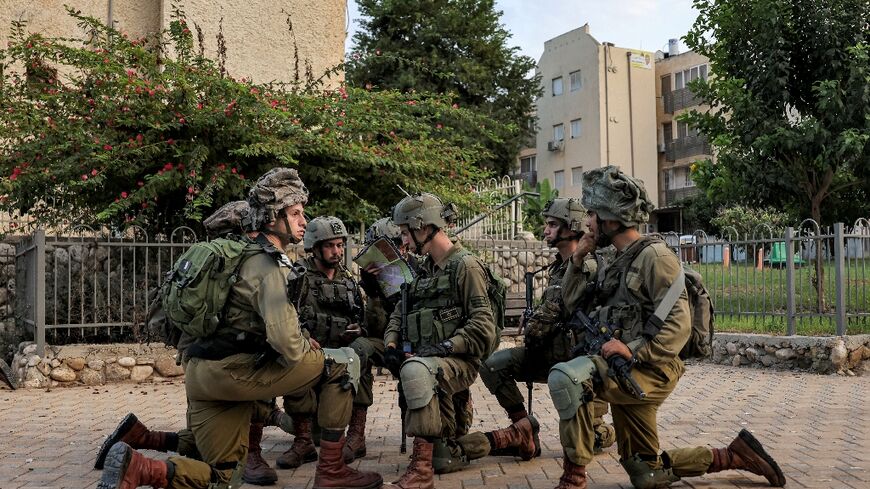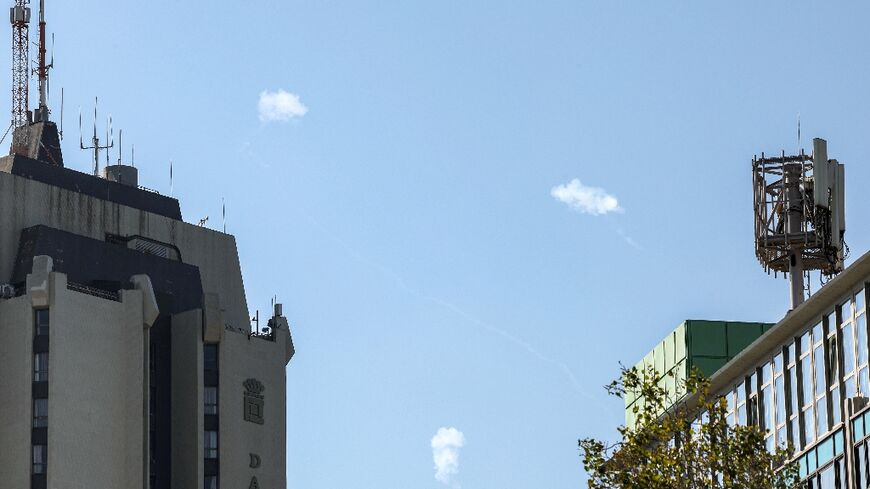The Israel-Hamas military balance

Israel has one of the best-resourced militaries in the world, heavily supported by Washington. In Hamas, it faces a highly trained armed group with powerful regional allies.
With both sides poised for an Israeli ground offensive in the wake of the deadly attack on Israel by Hamas on October 7, here is an overview of their military resources.
- Israel -
The Israel Defense Forces (IDF) number 169,500, of which 126,000 are army, according to Britain's International Institute for Strategic Studies (IISS).
On top of that, it has 400,000 reservists, of which 360,000 have been mobilised since the Hamas attack.
Israel also has some of the most technologically advanced defences in the world, including the "Iron Dome" anti-missile system.
IISS says it has around 1,300 tanks and other armoured vehicles, 345 fighter jets and a vast arsenal of artillery, drones and state-of-the-art submarines.
Though not a declared nuclear state, Israel's nuclear weapons cache is an open secret and the Arms Control Association puts its number of warheads at 90.
- US ally -
Washington provides $3.8 billion per year to Israel in military aid under a 10-year agreement running until 2028.
Defense Secretary Lloyd Austin said Sunday that he had activated deployment of a Terminal High Altitude Area Defense (THAAD) battery and additional Patriot battalions "throughout the region".
He added that he had put "an additional number of forces on prepare-to-deploy orders ... to increase their readiness and ability to quickly respond as required."
Washington had already delivered increased munitions to Israel and deployed two aircraft carriers to the eastern Mediterranean -- the USS Gerald Ford, the world's largest warship, and the USS Eisenhower -- to deter not just Hamas but also its allies Iran and the Lebanese Islamist movement Hezbollah.
The US military on Tuesday ordered 2,000 personnel to prepare for deployment to the Middle East as a show of force.
- Hamas -
Hamas has a diverse arsenal built up over many years.
Its armed forces, called the Ezzedine Al-Qassam Brigades, numbers 15,000 men according to IISS, though it notes that Arab media have put the figure at 40,000.
They have heavy weapons obtained from across the Middle East -- particularly Iran, Syria and Libya -- and has also sourced handguns and assault rifles from China and other regions.
It also has a variety of locally made, improvised explosives and Western sources say enough drones, mines, anti-tank guided missiles, grenade launchers and mortar shells to hold out for a long period, though precise figures are unavailable.
The majority of its rockets are also locally manufactured and technologically rudimentary.
- Hezbollah -
There have already been exchanges across the border between Israel and Lebanon, where the Iran-backed Hezbollah is based.
"Hezbollah can tie up IDF resources without having to fully commit to the fight, instead relying on occasional rocket or missile strikes to prevent the Israelis from growing complacent and forcing the IDF to commit manpower and materiel along the northern border," said the Soufan Center, a US think tank.
In 2021, the group claimed to have 100,000 fighters. The Institute for National Security Studies (INSS), an Israeli think tank, says the number is half that.
"Most Hezbollah militants are not full-time fighters, but rather engage in militant activity as and when required by the group's commanders," according to Elliot Chapman of the British defence analysis firm Janes.
Hezbollah mobilised 40,000 men at the outbreak of Syria's civil war, he noted.
INSS says the group's arsenal counts 150,000 to 200,000 rockets and missiles, including "hundreds" of precision rockets.
"Strategically, Hezbollah's rocket arsenal is the group's most significant capability for fighting Israel," Chapman said.
- Iran -
Since its Islamic revolution in 1979, Iran has made support for Palestinians one of the pillars of its ideology.
Foreign Minister Hossein Amir-Abdollahian warned Sunday that "The region is like a powderkeg ... I warn the United States and its proxy (Israel) that if they do not immediately stop the crime against humanity and genocide in Gaza, anything is possible at any moment and the region will go out of control".
Western analysts minimise the threat of Iran becoming directly involved and point rather to its support from Hamas, Hezbollah and Huthi rebels in Yemen -- a so-called "axis of resistance" of Israel's enemies.
Raz Zimmt, of INSS, said Iran currently had "no interest in Hezbollah engaging in an all-out war" that might threaten such a key "strategic asset".
But he added that Tehran's hand could be forced by "an Israeli ground invasion, and especially Israeli military success, which will threaten the very survival of Hamas and/or its ability to maintain effective control over the Gaza Strip".





